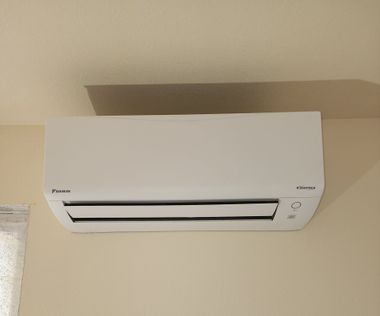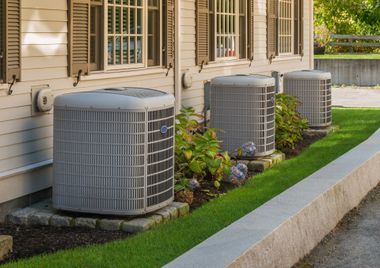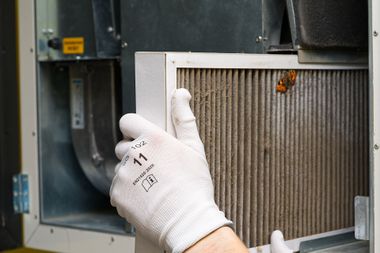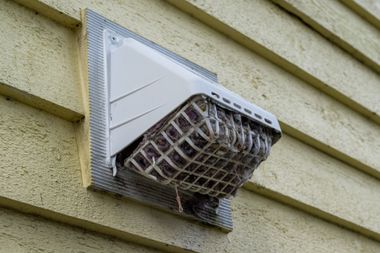Our Services
HVAC Services Portland can Trust
Services We're Offering
Please see below for a list of services we offer:
Ductless Mini-Split Systems
What Is a Ductless Mini Split System?
A ductless mini split system consists of an indoor unit, an outdoor unit, refrigerant tubing, and a power cable connecting them. Unlike central forced air systems, these systems don't require extensive ductwork, making them a cost-effective solution for room additions or homes with no existing ducts. Each mini split unit can provide heating and cooling to individual rooms, offering customizable temperature control.
Components of a Mini Split System
- Indoor Unit: Typically mounted on a wall, ceiling, or floor, the indoor air handlers distribute heated or cooled air throughout your space.
- Outdoor Unit: This unit houses the compressor and condenser, releasing heat from your home during summer and absorbing heat from the outdoors in winter.
- Refrigerant Tubing and Power Cable: A narrow conduit containing refrigerant tubing, a power cable, and a condensate drain connects the indoor and outdoor units. The installation requires only a small hole in the wall, ensuring minimal disruption to your home.
Advantages of Mini Split Installation
1. Energy Efficiency
Mini split are renowned for their energy efficiency. They consume less energy compared to traditional HVAC systems by eliminating energy losses associated with ductwork. Many mini split units also earn Energy Star certifications, ensuring optimal energy savings.
2. Improved Indoor Air Quality
Central air conditioning systems can accumulate dust, allergens, and pollutants within their ductwork. A ductless mini split system, on the other hand, uses advanced filtration to enhance indoor air quality, providing cleaner and healthier air.
3. Flexible Installation Options
A mini split can be installed virtually anywhere, making it perfect for room additions, garage conversions, or areas where extending ductwork isn’t feasible. With options for wall-mounted, ceiling cassette, or floor-standing indoor units, you can customize your cooling system’s layout. Additionally, ductless mini splits allow for cooling specific areas or rooms of a home, providing zoning benefits over traditional systems.
4. Zoned Temperature Control
Unlike central air conditioners that cool the entire home at once, ductless mini splits offer precise temperature control for individual rooms. This means you can reduce energy consumption by only conditioning the rooms you use most.
These systems can address rooms that can be too hot or too cold, enhancing comfort in both new and older homes.
5. Reduced Carbon Monoxide Risk
Because mini split systems don’t burn fuel, the risk of carbon monoxide exposure is significantly reduced compared to traditional heating systems. This ensures a safer and healthier home environment.
Comparing Mini Split Systems to Traditional HVAC Systems
Central Forced Air Systems
While central forced air systems are effective for whole-house heating and cooling, they often suffer from energy losses due to leaky ducts. Additionally, central air conditioning can struggle to maintain consistent temperatures in individual rooms, leading to wasted energy and discomfort.
Window Units
While window units provide quick cooling for small rooms, they’re noisy, inefficient, and lack the heating capability of mini split air conditioners. A ductless system offers a quieter and more energy-efficient alternative.
Traditional HVAC Systems
Traditional HVAC systems typically require significant ductwork installation. If your home lacks existing ductwork, extending ductwork can be expensive and disruptive. A mini split installation avoids these challenges, providing efficient cooling and heating without the added cost. Additionally, ductless systems tend to be quieter than ducted systems due to their design, which eliminates the sounds associated with ductwork.
Situations Where a Ductless System is Ideal
Ductless mini split systems shine in a variety of situations, offering flexible and efficient solutions where traditional HVAC systems might fall short.
For homes without existing ductwork, mini split systems are a game-changer. They eliminate the need for costly and invasive ductwork installation, making them a cost-effective choice. Similarly, in homes with limited space, these compact systems can be installed in tight areas, providing efficient heating and cooling without taking up much room.
Homes with high ceilings or large rooms can also benefit significantly from ductless mini splits. These systems are designed to handle the demands of larger spaces, ensuring consistent and comfortable temperatures throughout. Additionally, if your home features unique architectural elements like sunrooms or lofts, mini split systems can be customized to meet the specific heating and cooling needs of these areas.
In essence, ductless mini split systems offer unparalleled flexibility and efficiency, making them ideal for a wide range of home layouts and conditions.
Tips for a Successful Mini Split Installation
- Choose the Right Installation Location: Proper placement of both indoor and outdoor units is critical for efficient cooling and heating.
- Hire a Certified HVAC Contractor: A professional HVAC contractor will ensure proper installation and optimal system performance.
- Ensure Adequate Power Supply: Verify that your home’s electrical system can support the power requirements of your mini split ac unit.
- Maintain Your System: Regular maintenance, including filter cleaning and refrigerant checks, will maximize energy savings and extend the lifespan of your ductless mini split.
We Recommend having your Mini Splits serviced at least once a year for:
- Improved Energy Efficiency: Clean filters and coils allow for better airflow and heat exchange, resulting in lower energy bills and lower emissions.
- Preventative Maintenance: Identify and address minor issues before they become major problems, like mold growth and water leaks, and save yourself money on major repairs.
- Extended Lifespan: Regular servicing can significantly prolong the life of your Mini Split System.
- Reduced Noise Levels: Proper maintenance can help to minimize operational noise.
- Better Indoor Air Quality:
Cleaning filters removes dust, pollen, and other airborne particles, contributing to cleaner air in your home.
Air Handler & Heat Pumps
We recommend servicing your Air Handlers and Heat Pumps at least once a year for:
- Your Health: Ensure clean, strong airflow.
- System Lifespan: Regular maintenance helps your system run smoothly and extend its lifespan.
- Energy Efficiency: Cut down on costs and emissions at the same time.
- Safety:
Regular maintenance helps ensure your system is safe to use.
Gas Furnaces
We recommend having your furnace serviced once a year for:
- Safety: Ensure there are no fire risks and no toxic gas leaks, such as carbon monoxide.
- Improve Energy Efficiency: Save yourself money on energy bills.
- Extend the Lifetime of Your Furnace:
Reduce costly repairs and replacements.
Air Duct Cleaning
According to the National Air Duct Cleaners Association (NADCA), you should have your air ducts cleaned every 3 to 5 years. Within that range, you may vary the frequency depending on dust and debris levels in your home, the presence of air pollutants in the area and in your home, and your desired air quality.
Here are some key reasons to have your air ducts cleaned regularly:
- Your Health: Improve indoor air quality by removing dust, dirt, pet dander, debris, etc.
- Eliminate Odors: Unpleasant odors from air vents can indicate trapped dust, debris, mold, or even a dead rodent.
- Reduce Fire Risk: Prevent sparks from igniting debris. Clogged ducts can become a fire hazard if a spark or the heat of a summer day ignites the debris.
- Save Energy, Money and Emissions: Reduce the workload on your HVAC system. Clean ducts allow your air conditioner and furnace to work more efficiently, which can save you money on your energy bills, and reduce emissions at the same time.
- Attract Fewer Pests and Pollutants:
Dirty ducts can harbor mice, rats, pollen, dust, construction debris, etc.
Dryer Vent Cleaning
According to the National Fire Protection Association, you should have your dryer vent cleaned at least once a year. Here’s why:
Fire Safety: The primary reason to clean a dryer vent is to reduce the risk of dryer fires caused by accumulated lint, which can easily catch fire when exposed to high heat from the dryer.
- Energy Efficiency: A clogged vent forces the dryer to work harder to expel air, resulting in longer drying times and increased energy usage.
- Clothing Damage: Improper drying due to a clogged vent can damage clothes by exposing them to excessive heat for extended periods.
- Improved Indoor Air Quality: Cleaning the vent can help remove dust and allergens that may be circulating in your home.
- Extended Dryer Lifespan:
Regular cleaning can extend the lifespan of your dryer by preventing excessive wear and tear from overheating.
Why Choose Us?
We Guarantee 100% Satisfaction for our HVAC Services
We are dedicated to quality work that meets your needs
- Mini-Split Installation & Servicing
- Air Handler & Heat Pump Installation & Servicing
- Gas Furnace Installation & Servicing
- Air Duct Cleaning
- Dryer Vent Cleaning

